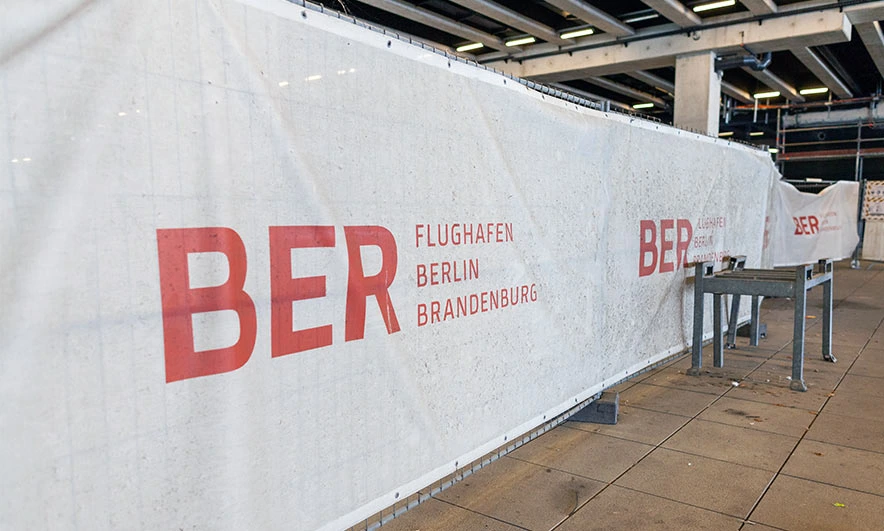Berlin Brandenburg Airport

It’s a cautionary tale – one that highlights how even the largest of projects can go awry. Berlin Brandenburg airport was built as a showpiece to modern Berlin, a brand new terminus that had no connotations of East or West but that was supposed to be the starting point for millions of travellers to explore the city from. It was supposed to open in 2012 but remains mothballed owing to a catalogue of faults.
Unlike Spain’s Cuidad Real airport (also known as Spain’s Ghost Airport) which actually opened and accepted albeit limited flights for nearly 3 years, Berlin Brandenburg has remained shuttered with only the minimal amount of activity to keep it maintained.
But why? It has a functional rail station providing fast connections into the city, a smart airport hotel adjoining it (with skeleton staff to run the taps occasionally and stop it falling into total disrepair), along with all the seeming functionality of a major international airport terminus. Baggage handling carousels creak round regularly, flight information boards display data (albeit pulled from a different airport) and airfield lighting is installed if not actively used. The reason cited by a BBC article was a combination of “political wrangling, bungling incompetence, and the world’s worst tangle of badly installed cabling.”
Whilst we cannot pass comment on the first two reasons, the latter is something we have seen all too often. In this case it’s not suggested that the cable is substandard or non-compliant, just that it is not fit for purpose. For Berlin Brandenburg the list of faults ran to over half a million – 550,000 to be more precise – and affected everything from fire suppression systems and automated alarmed doors to the wrong lightbulbs and insufficient power and data to support airside retail operations. It was so bad the local mayor had to announce a previously planned grand opening to be presided over by Chancellor Angela Merkel was cancelled.
In all, the new project engineers estimate the need to install “many hundreds of kilometres of new cable” to replace and compensate for the original installation. Retro-fitting cable is both labour intensive and expensive, requiring extensive ‘make-do’ repairs after the event. If they’re in the tangle the article suggests, this will be even more of a challenge trying to identify both the source and the end of each cable run. Technology has advanced, even since the planned opening in 2012, and systems will need to be upgraded – potentially requiring a hardware (including cables) as well as a software update. Add to this, the change in cable regulations and legislation since the original install took place – CPR has now been introduced and whilst cables manufactured prior to 1st July 2017 are compliant by nature of their age, the project engineers may take the decision to simply start again with new cables that meet both the power, data or control requirements of the building AND meet the requirements of the current regulations. It may be the only way to untangle the mess that seemingly exists and definitely know that demand and performance will be met once the terminus finally becomes operational.
The take-away from this debacle is two-fold: yes, even the largest of public works projects in a country renowned for efficiency can be scuppered by bad cabling, and that it underlines the value of expert technical advice in specifying the right cables at the outset. Clearly identifiable cables neatly and logically routed during first fix install, whether direct or through containment, can save time, money and a whole lot of headache down the line.